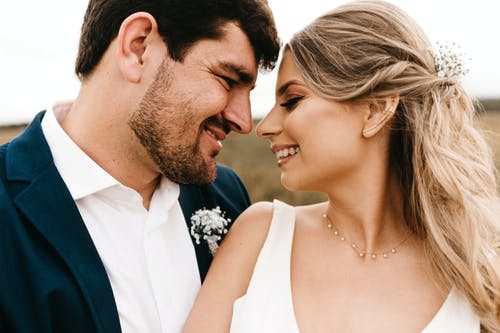5 Best Non-verbal Communication Tips To Boost Your Marriage

We all know the importance of spoken words as a means of communication in marriage, but we don’t talk much about the importance of non-verbal communication in marriage.
Non-verbal communication is as important as verbal communication in marriage. According to Bobby Wagner, “When you’re around somebody for a long period of time, they know you and you know them. So, there’s a lot of nonverbal communication that happens.”
That’s the truth; if you have been married for a long time, your partner would have been warned by the constant “I love you from you. Your actions may speak better at this point.
In the book by Ronald E. and Heidi Roggio titled Communication and Relationship Satisfaction in Married Couples, the duo stressed that non-verbal cues, including eye contact and touches, are important in marriage. That being said, let’s check what non-verbal communication in marriage means.
What Is Non-Verbal Communication in Marriage?
Non-verbal communication is when messages or information are passed without using words. This comprises body language—gestures, posture, facial expressions—eye contact, touching, space or proxemics, and paralinguistic or vocal qualities like tone and pitch. It helps in the conveyance of the emotions that a speaker feels.
It is supported by studies that a major share of communication is non-verbal; psychologist Albert Mehrabian found that 55% is body language, 38% is tone of voice, and only 7% is the word itself. Therefore, it becomes of huge significance to find out the hidden meaning behind the words through verbal communication.
Non verbal communication or body language can repeat, contradict, substitute, and emphasize verbal communication and play a major role in proper interaction both at a personal and professional level. Moreover, non-verbal acts greatly rely on cultural traditions since different gestures and facial expressions may have a different meaning within different societies.
Now that you know what non-verbal cues stand for, let’s look at the need for non-verbal communication in marriage.
Benefits of Non-Verbal Communication in Marriage:
Non-verbal cues are not words, but they are enough to tell us what and how our partner is feeling about us. So, whether it is a blink of an eye, a slight touch, or a worm smile, nonverbal communication can help you deepen your bond with your better half.
This form of communication can obviously be reassuring; it can increase understanding, which brings closeness. When you understand nonverbal communication well, you’ll know that it is not just about showing how you feel when you are conversing but also how your partner interprets what you say. So it is important to understand how important they are. Below are other benefits of non-verbal communication in marriage.
1. It will help you express your emotions to your partner.
Non verbal communication cues sometimes help you express emotions that words cannot verbalize. Your facial expressions—which can mean an eye blink or a genuine smile—are subtle in terms of body expression, from crossed arms to relaxed posture; your vocal tone, which ranges from a soft whisper to a sharp pitch, can hold a lot of emotions within them, ranging from happy and angry to sad.
It will help you express your emotions to your partner.
Non-verbal cues sometimes aid in expressing emotions that words cannot verbalize. Facial expressions—which can mean an eye blink or a real smile—are subtle in terms of body expression, from crossed arms and relaxed postures; tones of voice, which range from soft whispers to sharp pitches, hold a lot of emotions within them, ranging from happy and angry to sad. These cues advise deep perception into your true feelings, thereby creating empathy—forming a more profound emotional bond between you two in terms of your relationship.
2. This makes you aware of and engaged with the cues:
Active listening would mean that, aside from the fact that one has heard the words, one is interested in showing them. This is done through body language such as nodding of the head in agreement, forward hunching, and also maintaining eye contact to let your partner know that you are fully present and engaged.
These acts act as an indication that you value their words and that they are deeply involved in what is going on.This kind of non-verbal behavior lets your spouse understand that they are listened to and respected, laying the path toward a closer and more powerful connection. Concentrate on showing that you care by being attentive, because that helps you establish a deeper level of emotion.
3. It creates better understanding:
What is important in nonverbal communication is that it may reveal our feelings when we do not utter a word. For instance, one might be trying to put across a message, but leaning forward or smiling underpins it and makes one more credible.
Again, conduct such as crossing arms may be misinterpreted as acting against self-interest or even discomfort, hence yielding possible miscommunication. When your body language goes in tandem with what one says, then clear communication will be brought about, and mutual understanding will flow unproblematically.
At times, it is just the readjustment of those silent messages around you so that they can always self-adjust to support verbal communications for easier and smoother interactions.
4. It will create closeness and build trust.
Consistent positive nonverbal cues help you create an atmosphere of trust and emotional closeness in your marriage. Think about what a good hug at the end of a long day will feel like, or a lingering look that says “I care,” or the light squeeze of a hand, which reassures that everything will be just fine.
All the simple acts of attention and affection, like these, look insignificant, yet they convey deep meaning and work magic in reminding the partner that he or she is loved and appreciated, ultimately increasing the bonding between both parties.
5. It will make conflict resolution faster.
Your body language says a lot during conflicts. It is only then that calm gestures, open body language, and a gentle tone may give way to constructive dialogue. These, in effect, are telling signals that you have an open mind and that you intend to clear up the issue.
Again, when you cross your hands during conversation and have aggressive expressions on your face, it makes your partner defensive. It’s not sometimes what you say, but how you say it. Therefore, remember to keep both your productive and respectful nonverbal cues in check.
6. It makes the relationship satisfying.
Another importance of nonverbal communication in marriage is that the couples involved will be happier and their relationship will be more satisfying. Think about a relationship where each couple understands every little nonverbal cue. For example, you and your partner have a special language used when you don’t want people to understand what you are saying to each other.
That shows understanding. Other people will marvel at the level of your understanding of each other. Research also says that this helps greatly to make couples happier.
Learn non-verbal communication skills now:
If you read this place, that means you have seen why non-verbal communication is important in a relationship, and you probably found out that you are not using enough of it in your marriage. Here we will look at how to improve on it or learn the skills.
1. Learn and practice active listening.
One of the best ways you can improve your non-verbal communication in marriage is to learn active listening and continue to improve on it. Active listening is all about paying 100% attention when your partner is talking to you. It indicates that you understand and care about what they have to say.
To do that, you must learn to maintain eye contact as they speak, don’t let anything distract you, and respond where it is necessary. Don’t be quick to dismiss them or judge their words.
2. Desist from Blaming or Criticizing Your Spouse:
Another way to work on your non-verbal communication is to shun criticism and blaming in your relationship. Blaming or criticizing your partner is not a good communication skill. Nobody likes to be blamed for anything, and when you do so, your partner will not feel relaxed enough to open up to you. It will make them defensive.
There are other ways you can make your emotions known without criticizing, blaming, or attacking them.
3. Always show empathy.
Empathy means placing yourself in your partner’s shoes to understand what they also feel. This act always helps you to understand your partner fully before adding your contributions.
This will result in closer ties and trust because it shows your partner that you care about what they feel and have gone through, even if they may be at fault. Remember that you are trying to improve your non-verbal communication skills.
4. You Need to Set Boundaries:
To improve your non-verbal skills, you will need to get your boundaries right. This is a crucial step to take, as it helps both of you understand what you can and can’t tolerate in your relationship. It also helps each of you to understand and respect your needs and prevent disagreements and conflicts.
To set boundaries, you must be clear about those things you want and do not want, and then communicate them to your spouse calmly. Read my post to learn the proper ways to set boundaries.
5. Show positive body language:
Positive body language includes smiling, making eye contact, and using open gestures. This kind of behavior would show your partner that you listen, are open, and are engaged. For instance, when she is speaking to you, the leaning in toward her is repeated here, with the nodding of the head at times, almost as if in agreement, sprinkled throughout the paragraph.
Do not cross your arms or turn away from her, as such gestures make you look uninterested or in lock-down mode. Positive body language will set an atmosphere that is warm and supportive so as to assure good communication along with emotional bonding.”
In Conclusion:
Non-verbal communication is an essential element in a marriage; it goes hand in hand with words when we express ourselves emotionally or seek to continue strengthening our bond. Another concern is the use of correct signs through gaze, touch, and personal behavior that facilitate better relationships based on implicit understanding, confidence, trust-building, and conflict resolution, leading to more enjoyable lives this way.
Developing such non-verbal communication skills implies learning how to listen effectively; displaying empathy through body language will send out supportive signals, which would greatly help foster communication.







